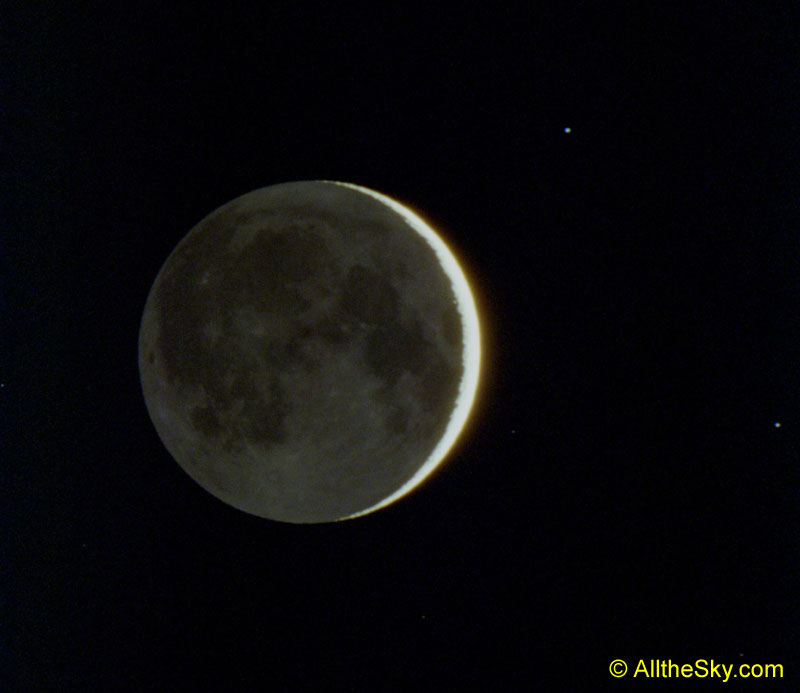The Moon's surface is covered by pulverized rock called regolith. This regolith has two primary compositions depending on the underlying rocks. In the dark areas, the regolith is pulverized basalt, a very dark rock. In the light areas, the regolith is pulverized anorthosite, a generally light colored rock. This is why the lighter areas apear white.
(The surface rocks have been pulverized by the nearly continuous bombardment of micrometeorites (among other sized objects) over the past 3.5 to 4 billion years.)
The sun's light at night reflects off the moon and on the the Earth. The moon is, in this aspect, like a dim mirror, allowing us to see some of the light from the sun that has bounced off of the moon. As shown in this picture,you can see the rest of the circle as a much darker colour. This is called "Earthshine", because it is light reflecting off of the moon, onto the Earth and back again.
The moon is the brightest object in the night sky but gives off no light of its own. Instead, it reflects light from the sun. This is why it appears white. However, there is more to this!
A person on Earth looking at the moon with the unaided eye can see light and dark areas on the lunar surface. The light areas are rugged, cratered highlands known as terrae (TEHR ee). The word terrae is Latin for lands. The highlands are the original crust of the moon, shattered and fragmented by the impact of meteoroids, asteroids, and comets. Many craters in the terrae exceed 25 miles (40 kilometers) in diameter. The largest is the South Pole-Aitken Basin, which is 1,550 miles (2,500 kilometers) in diameter.
The dark areas on the moon are known as maria (MAHR ee uh). The word maria is Latin for seas; its singular is mare (MAHR ee). The term comes from the smoothness of the dark areas and their resemblance to bodies of water. The maria are cratered landscapes that were partly flooded by lava when volcanoes erupted. The lava then froze, forming rock. Since that time, meteoroid impacts have created craters in the maria.
(The surface rocks have been pulverized by the nearly continuous bombardment of micrometeorites (among other sized objects) over the past 3.5 to 4 billion years.)
The sun's light at night reflects off the moon and on the the Earth. The moon is, in this aspect, like a dim mirror, allowing us to see some of the light from the sun that has bounced off of the moon. As shown in this picture,you can see the rest of the circle as a much darker colour. This is called "Earthshine", because it is light reflecting off of the moon, onto the Earth and back again.
 |
| earth shine |
The moon is the brightest object in the night sky but gives off no light of its own. Instead, it reflects light from the sun. This is why it appears white. However, there is more to this!
A person on Earth looking at the moon with the unaided eye can see light and dark areas on the lunar surface. The light areas are rugged, cratered highlands known as terrae (TEHR ee). The word terrae is Latin for lands. The highlands are the original crust of the moon, shattered and fragmented by the impact of meteoroids, asteroids, and comets. Many craters in the terrae exceed 25 miles (40 kilometers) in diameter. The largest is the South Pole-Aitken Basin, which is 1,550 miles (2,500 kilometers) in diameter.
The dark areas on the moon are known as maria (MAHR ee uh). The word maria is Latin for seas; its singular is mare (MAHR ee). The term comes from the smoothness of the dark areas and their resemblance to bodies of water. The maria are cratered landscapes that were partly flooded by lava when volcanoes erupted. The lava then froze, forming rock. Since that time, meteoroid impacts have created craters in the maria.
No comments:
Post a Comment